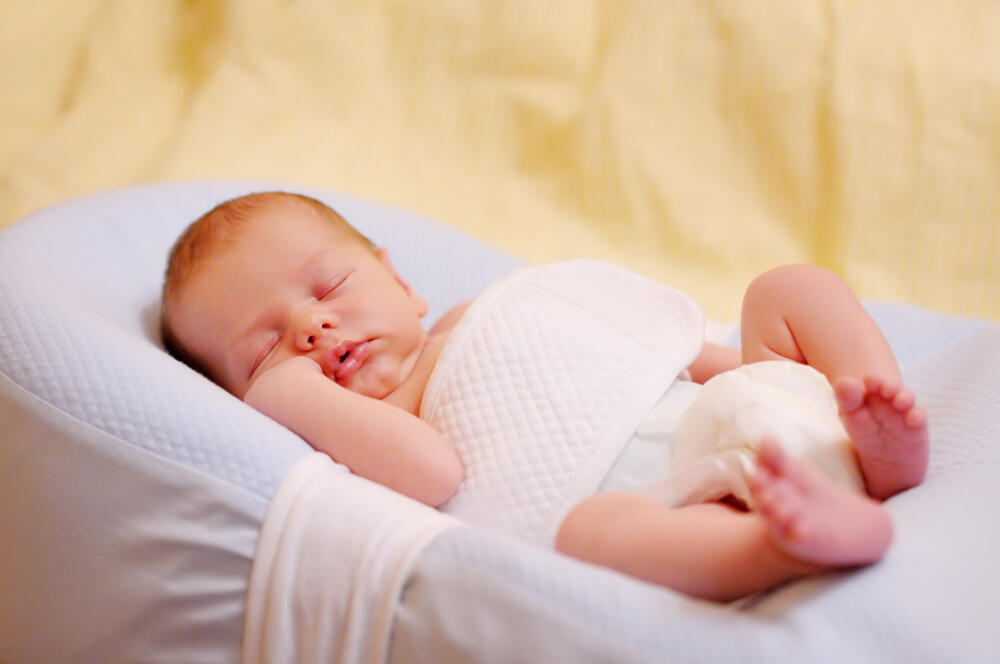Getting your Trinity Audio player ready...
After months in the womb, newborn babies' bodies need to quickly adapt to an entirely new and different environment often manifesting conditions that can be concerning for first-time parents.
More stories:
To be clear, most of these common conditions pass on their own and are not dangerous. Only in extremely rare cases do they require medical attention. In this guide, you can find the range of expected symptoms in your newborn, when a doctor's intervention might be necessary.
Colic
Colic is defined as when a baby cries for more than three hours a day, for more than three days a week, for over one week. Around 20% of infants experience colic during the first four months of life. Although the exact cause is not fully understood, studies have shown that colic is not a dangerous condition and does not affect the baby's development. The main problem is the stress and anxiety it creates in parents. Among suggestions made to alleviate symptoms, some parents said switching to a partially broken-down formula, such as Nutramigen or Progestimil, could help. they also suggested altering the mother's diet by removing foods like cabbage, broccoli, beans, caffeine, and alcohol, or attempting to alleviate discomfort with mild pain relievers containing paracetamol. If crying persists beyond a week despite these attempts, a doctor should be consulted.
Erythema toxicum neonatorum
This is a rash that often causes significant concern for parents and sometimes even for medical staff who may not know how to diagnose it. However, it's a common phenomenon that usually appears within the first two to three days of life. The rash consists of several red spots, including tiny red bumps surrounded by a red halo, and it appears in different areas of the body. It can last between a few hours to a week, is not dangerous, goes away on its own, requires no treatment, and does not increase the risk of future allergies.
Mongolian spot
Mongolian spot manifests as a blue mark that appears on the lower back and buttocks of many infants. It’s caused by the accumulation of cells called melanocytes, which produce the pigment melanin. This phenomenon usually fades away during the first years of life. However, even if a portion of it remains, it's purely a cosmetic concern and doesn't require any medical treatment. In cases where the mark appears on the legs, shoulders, or arms, it tends to persist throughout life, but this is also not dangerous and doesn't necessitate treatment.
In most instances, parents are advised to have their newborns undergo an ultrasound to ensure there are no abnormalities in the neural system, where melanocytes are expected to be located. However, in the vast majority of cases, the test results are normal.
Infant spit ups
Many infants swallow amniotic fluid and are likely to expel clear or milky liquid on the first day after birth. Additionally, during the first weeks after birth, spitting up may occur after feeding. This is generally a normal occurrence. However, if spitting up is excessive, consisting of more than a quarter of the amount of food consumed, it might indicate overfeeding. Spitting up often happens in undigested food that originates from the upper part of the intestines. It usually comes in fluid form. In contrast, vomiting is typically forceful and the color can be yellowish.
If your baby spits up often and in significant amounts, or if they seem uncomfortable or irritable after feeding, and their back becomes arched (a condition known as Sandifer syndrome), they might be suffering from infant gastroesophageal reflux, a condition that occurs where the barrier separating the stomach and the esophagus isn't fully developed, allowing stomach content to exit either through the mouth or only into the esophagus.
When reflux is severe, the baby might not gain as much weight as expected or might urinate less. In such cases, consulting a pediatrician is advised. They might consider switching to a formula that thickens in the stomach and doesn't expel easily or prescribe medication to reduce stomach acidity, ensuring that even if reflux occurs, the baby won't experience discomfort.
Before everything else, make sure that the amount of food you’re giving your baby isn’t excessive. The appropriate dosage is 120 to 150 ml per day, per kilogram of body weight.
Sneezing
During the first few days after birth, the baby might begin sneezing. The exact reason for this occurrence is not fully understood. The prevailing theories suggest that it is a response of the nasal mucosa due to temperature differences between the womb and the outside air, increased humidity within the nasal cavity, or a neurological reflex. In any case, this is a phenomenon that is not dangerous and typically resolves on its own.
The umbilical cord
During the time spent in the womb, the umbilical cord is a lifeline that provides everything the fetus needs, from nutrients to oxygen. However, after birth, it becomes obsolete. It is clamped and cut a few centimeters from the body using a sterilized clamp. The cut dries up and hardens, eventually falling off completely within about two weeks of birth. Sometimes, minor bleeding might occur around the stump, but it stops on its own within minutes. In the past, the stump would’ve been sterilized with alcohol, although today it’s recommended to wash it with water and allow it to dry.
In rare cases, the stump might not fully heal or may become infected. If you notice redness around the umbilical area, foul odor, high fever, or persistent discharge, you must consult a doctor who might recommend cleaning the area and, in some cases, even antibiotic treatment. If the cord doesn't fall off within a month, you should consult a pediatrician who might consider its removal by a pediatric surgeon.
Vernix
During the third trimester of pregnancy, the baby's skin starts to be covered by a layer of vernix, a waxy substance. Its assumed function is to protect the baby's skin during its time in the womb, during birth, and in the first hours of life.
In some babies, the vernix layer can be thick, while in others, it might be thin or barely visible. The assumption is that vernix helps the baby maintain body temperature, defends against infections, and facilitates passage through the birth canal.
Nurses in neonatal wards often clean the newborn and sometimes remove the vernix, but this isn’t necessary. The layer is generally absorbed within the first few hours of life and disappears by the end of the first week. It's not recommended to use creams or ointments on the vernix layer, as they might cause irritation, inflammation, or fungal growth.
Changes in genital organs
The baby is exposed to hormones from the mother that can cause changes in the genital organs, which usually resolve on their own. For example, swelling in the breasts can occur in both male and female infants, as well as slight milk secretion or a mild discharge from the genitals, which can appear white, yellow, or choroid. These changes typically resolve within a month.
Reflexes and movements
A newborn enters the world with unique reflexes that assist them in their life outside the womb. For instance, the sucking reflex causes the baby to start sucking when something touches their lips. The grasp reflex leads the baby to tightly hold onto something when their palm is touched.
The Moro reflex, also known as the "startle reflex," causes the baby to extend and then draw in their arms and legs in response to a sudden noise, bright light, or pain.
Another phenomenon that can worry parents is body movements during sleep, which might appear as spasms but completely disappear when the baby is awakened. All of these reflexes are considered normal and disappear by around four months of age.
Fontanelles
The baby’s skull bones are not completely fused after birth to allow for brain growth. This results in two central openings in the skull – the anterior fontanelle, which closes around one and a half years of age, and the posterior fontanelle, which closes around four months of age.
Many parents report that when touching the anterior fontanelle they feel like they are "touching the brain," but it's actually covered by layers of tissue and fluids, and gentle touching is not harmful.
The fontanelles have significance in diagnosing signs of distress: a sunken anterior fontanelle might indicate dehydration, while an excessively raised one could suggest increased intracranial pressure, bleeding, or meningitis. a pediatrician should be consulted over any concern over the fontanelles.









